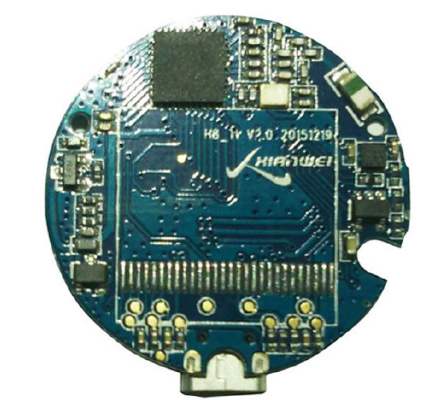The technological advancement of high-density wiring of multi-layer boards has made it possible to continue to use conventional electrolytic copper foil, which is no longer suitable for manufacturing high-precision PCB pattern circuits. In this case, a new generation of copper foil-low profile (LP) or ultra-low profile (VLP) electrolytic copper foil has appeared one after another. Low-profile copper foil was successfully developed in the early 1990s (1992-1994), almost the same period in the United States) and Japan.
Generally, the original foil is made by electroplating, and the current density used is very high, so the microcrystals of the original foil are very rough, showing coarse columnar crystals. The "ridgelines" of the cross-faults of its slices have large undulations. The crystallization of LP copper foil is very fine (below 2μm),

is equiaxed crystal grains, does not contain columnar crystals, it is lamellar crystals, and the ridges are flat. The surface roughness is low. VLP copper foil is actually measured and the average roughness (R.) is 0.55μm (generally copper foil is 1.40μm). The maximum roughness (Rm?x) is 5.04μm (normal copper foil is 12.50μm). See Table 5-1-8 for the comparison of various copper foil characteristics.
In addition to ensuring the general performance of ordinary copper cylinders, VLP and LP copper foils also have the following characteristics.
1. The initial precipitation of VLP and LP copper foil is a crystal layer keeping a certain distance. The crystals are not vertically connected and stacked up, but form a slightly concave and convex flat sheet. This crystalline structure can prevent the sliding between metal crystal grains, and has a relatively large force to resist the deformation caused by the influence of external conditions. Therefore, the tensile strength and elongation (normal state, hot state) of copper foil are better than general electrolytic copper foil.
2. LP copper foil is smoother and more delicate on the roughened surface than ordinary copper foil. At the interface between the copper foil and the substrate, there will be no residual copper powder (copper powder transfer phenomenon) after etching, which improves the surface resistance and interlayer resistance characteristics of the PCB, and improves the reliability of the dielectric performance.
3. It has high thermal stability and will not recrystallize copper due to multiple lamination on a thin substrate.
4. The time to etch the pattern circuit is less than that of normal electrolytic copper foil. Reduce the side erosion phenomenon. The white spots after etching are reduced. Suitable for the production of fine lines.
5. LP copper foil has high hardness, which improves the drillability of multilayer boards. It is also more suitable for laser drilling.
6. The surface of LP copper foil is relatively flat after the multilayer board is pressed and formed, which is suitable for the production of fine wire circuits.
7. The thickness of the LP copper foil is uniform, the signal transmission delay is small after the PCB is made, the characteristic impedance is well controlled, and there will be no noise between lines and between layers.
Low profile copper foil is very different from general electrolytic copper foil in terms of fine structure, such as grain size, distribution, crystal orientation and distribution. The low-profile copper foil manufacturing technology is based on the electrolyte formula, additives, electroplating conditions, etc. in the original traditional general electrolytic copper foil production, with great improvements and technological advances.